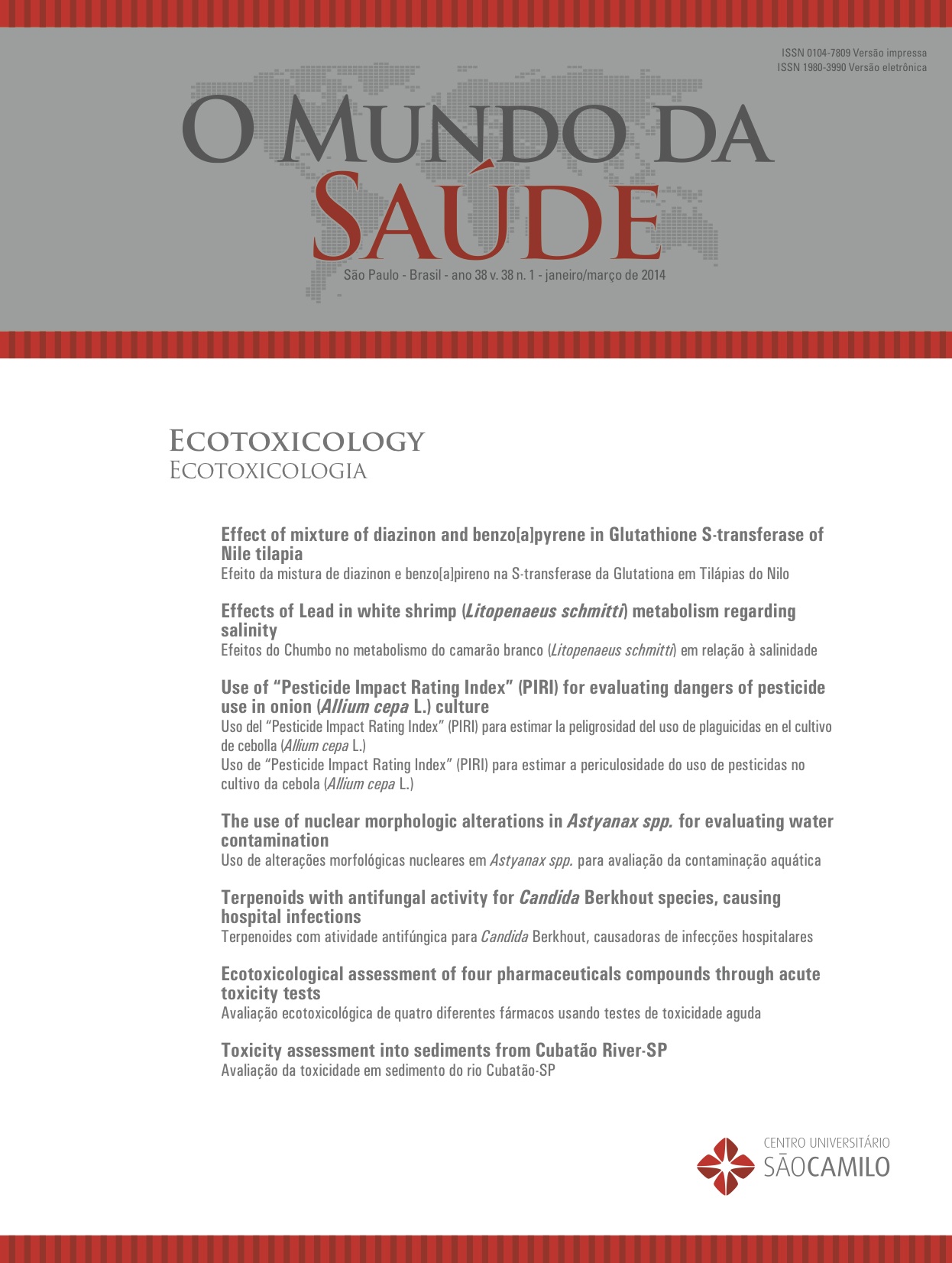Presence of organochlorines in water and oysters Crassostrea sp. in Cananeia-SP
DOI:
https://doi.org/10.15343/0104-7809.20143801066074Keywords:
Crassostrea, Inseticides Organochlorine, Pollutants, EnvironmentAbstract
Mangrove oyster Crassostrea sp. is used here as bioaccumulator bodies to monitor the presence of organochlorine pesticides
DDT and its metabolites, DDD, DDE and HCB fungicide, to evaluate its impact. Being a place of great ecological
importance in the ecosystem, the Cananeia estuarine lagoon complex presents several aquatic environments subject to
contamination by human activities. Within this region were chosen four collection points and bodies of water, with some
changes on the board by the shell fishermen, due to the seasons, as in winter there is a decrease in the production of oysters.
Sessile aquatic organisms such as oysters are constantly exposed to contaminants. Being body filter feeders, oysters
may bioconcentrate these contaminants. In this study, there is the possibility of oysters and water contamination, using
the methodology of liquid-liquid extraction, using the detector μECG by gas chromatography. In the case of oysters the
methodology used was USEPA 8081B (2007) and gas chromatography. Thus, this study evaluated the presence of organochlorines
in water and breeding organizations, established in the area bounded by evaluating the possibility of damage to
the environment and public health of these contaminants. The results were negative, not detecting the presence of organochlorine
pesticides in oysters but in some samples of water we detected the presence of pesticides.






























